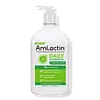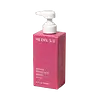What's inside
What's inside
 Key Ingredients
Key Ingredients

 Benefits
Benefits

 Concerns
Concerns

 Ingredients Side-by-side
Ingredients Side-by-side

Water
Skin ConditioningCetyl Alcohol
EmollientGlycerin
HumectantDimethicone
EmollientButyrospermum Parkii Butter
Skin ConditioningCeteareth-20
CleansingAloe Barbadensis Leaf Juice
Skin ConditioningRetinol
Skin ConditioningFerulic Acid
AntimicrobialCamellia Sinensis Leaf Extract
AntimicrobialAnthemis Nobilis Flower Extract
MaskingPyrus Malus Fruit Extract
Skin ConditioningCaprylic/Capric Triglyceride
MaskingHelianthus Annuus Extract
EmollientOryza Sativa Bran Extract
Skin ConditioningRosmarinus Officinalis Leaf Extract
AntimicrobialTocopherol
AntioxidantCetearyl Ethylhexanoate
EmollientIsopropyl Myristate
EmollientCetearyl Phosphate
Skin ConditioningGlyceryl Stearate
EmollientSynthetic Beeswax
Emulsion StabilisingCarbomer
Emulsion StabilisingBHT
AntioxidantXanthan Gum
EmulsifyingTetrasodium Glutamate Diacetate
Parfum
MaskingPhenoxyethanol
PreservativeEthylhexylglycerin
Skin ConditioningCaprylyl Glycol
EmollientHexylene Glycol
EmulsifyingSodium Hydroxide
BufferingAmyl Cinnamal
PerfumingCitronellol
PerfumingGeraniol
PerfumingHexyl Cinnamal
PerfumingHydroxycitronellal
PerfumingLinalool
PerfumingSodium Chloride
MaskingSodium Carbonate
BufferingWater, Cetyl Alcohol, Glycerin, Dimethicone, Butyrospermum Parkii Butter, Ceteareth-20, Aloe Barbadensis Leaf Juice, Retinol, Ferulic Acid, Camellia Sinensis Leaf Extract, Anthemis Nobilis Flower Extract, Pyrus Malus Fruit Extract, Caprylic/Capric Triglyceride, Helianthus Annuus Extract, Oryza Sativa Bran Extract, Rosmarinus Officinalis Leaf Extract, Tocopherol, Cetearyl Ethylhexanoate, Isopropyl Myristate, Cetearyl Phosphate, Glyceryl Stearate, Synthetic Beeswax, Carbomer, BHT, Xanthan Gum, Tetrasodium Glutamate Diacetate, Parfum, Phenoxyethanol, Ethylhexylglycerin, Caprylyl Glycol, Hexylene Glycol, Sodium Hydroxide, Amyl Cinnamal, Citronellol, Geraniol, Hexyl Cinnamal, Hydroxycitronellal, Linalool, Sodium Chloride, Sodium Carbonate
 Reviews
Reviews

Ingredients Explained
These ingredients are found in both products.
Ingredients higher up in an ingredient list are typically present in a larger amount.
Dimethicone is a type of synthetic silicone created from natural materials such as quartz.
What it does:
Dimethicone comes in different viscosities:
Depending on the viscosity, dimethicone has different properties.
Ingredients lists don't always show which type is used, so we recommend reaching out to the brand if you have questions about the viscosity.
This ingredient is unlikely to cause irritation because it does not get absorbed into skin. However, people with silicone allergies should be careful about using this ingredient.
Note: Dimethicone may contribute to pilling. This is because it is not oil or water soluble, so pilling may occur when layered with products. When mixed with heavy oils in a formula, the outcome is also quite greasy.
Learn more about DimethiconeEthylhexylglycerin (we can't pronounce this either) is commonly used as a preservative and skin softener. It is derived from glyceryl.
You might see Ethylhexylglycerin often paired with other preservatives such as phenoxyethanol. Ethylhexylglycerin has been found to increase the effectiveness of these other preservatives.
Glycerin is already naturally found in your skin. It helps moisturize and protect your skin.
A study from 2016 found glycerin to be more effective as a humectant than AHAs and hyaluronic acid.
As a humectant, it helps the skin stay hydrated by pulling moisture to your skin. The low molecular weight of glycerin allows it to pull moisture into the deeper layers of your skin.
Hydrated skin improves your skin barrier; Your skin barrier helps protect against irritants and bacteria.
Glycerin has also been found to have antimicrobial and antiviral properties. Due to these properties, glycerin is often used in wound and burn treatments.
In cosmetics, glycerin is usually derived from plants such as soybean or palm. However, it can also be sourced from animals, such as tallow or animal fat.
This ingredient is organic, colorless, odorless, and non-toxic.
Glycerin is the name for this ingredient in American English. British English uses Glycerol/Glycerine.
Learn more about GlycerinPhenoxyethanol is a preservative that has germicide, antimicrobial, and aromatic properties. Studies show that phenoxyethanol can prevent microbial growth. By itself, it has a scent that is similar to that of a rose.
It's often used in formulations along with Caprylyl Glycol to preserve the shelf life of products.
Water. It's the most common cosmetic ingredient of all. You'll usually see it at the top of ingredient lists, meaning that it makes up the largest part of the product.
So why is it so popular? Water most often acts as a solvent - this means that it helps dissolve other ingredients into the formulation.
You'll also recognize water as that liquid we all need to stay alive. If you see this, drink a glass of water. Stay hydrated!
Learn more about WaterXanthan gum is used as a stabilizer and thickener within cosmetic products. It helps give products a sticky, thick feeling - preventing them from being too runny.
On the technical side of things, xanthan gum is a polysaccharide - a combination consisting of multiple sugar molecules bonded together.
Xanthan gum is a pretty common and great ingredient. It is a natural, non-toxic, non-irritating ingredient that is also commonly used in food products.
Learn more about Xanthan Gum